Memorials
This settlement of O'odham people was first visited in January 1691 and they established it as a mission. By 1701 a small church was started and Juan de San Martin was the first resident priest.

"Bloody Monday"
Election day, Aug. 6, 1855, known as Bloody Monday due to riots led by "Know-Nothing" mobs. This political party was anti-Catholic and nativist. Attacks on German immigrants east of downtown and Irish in the west caused at least 22 deaths, arson, and looting. Catholic Cathedral of the Assumption & St. Martin's Church were threatened with destruction.
American (Know-Nothing) Party
This party feared that Catholic immigrants from Germany and... Read More
This is a plaque commemorating the largest slave sale in Georgia's History.
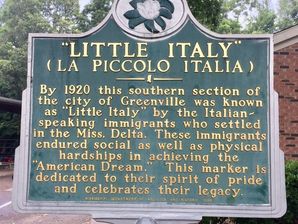
By 1920 this southern section of the city of Greenville was known as "Little Italy" by the Italian-speaking immigrants who settled in the Miss. Delta. These immigrants endured social as well as physical hardships in achieving the "American Dream." This marker is dedicated to their spirit of pride and celebrates their legacy.
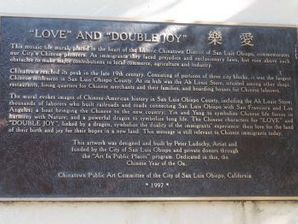
This mosaic tile mural, placed in the heart of the historic Chinatown District of San Luis Obispo, commemorates our City’s Chinese pioneers. As immigrants they faced prejudice and exclusionary laws, but rose above such obstacles to make major contributions to local commerce, agriculture and industries.
Chinatown reached its peak in the late 19th century. Consisting of portions of three city blocks, it was the largest Chinese settlement in San Luis Obispo County. At its hub was the Ah Louis... Read More
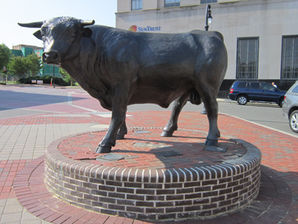
Dedicated in 2007 the Durham bull depicts a classic antebellum symbol of Durham, NC. It stands as a testament to Durham's prosperity and growth dedicated at a time when gentrification of the downtown area was just beginning to truly take off.
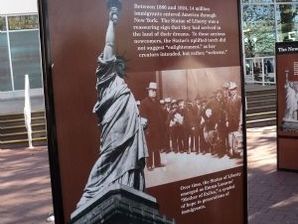
Between 1886 and 1924, 14 million immigrants entered America through New York. The Statue of Liberty was a reassuring sign that they had arrived in the land of their dreams. To these anxious newcomers, the Statue’s uplifted torch did not suggest “enlightenment,” as her creators intended, but rather, “welcome.” Over time, the Statue of Liberty emerged as Emma Lazarus’ “Mother of Exiles,” a symbol of hope to generations of immigrants.
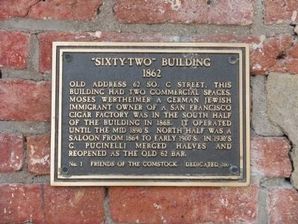
Old address 62 So. C Street, this building had two commercial spaces. Moses Wertheimer a German Jewish immigrant owner of a San Francisco cigar factory was in the south half of the building in 1868. It operated until the mid 1890’s. North half was a saloon from 1864 to early 1900’s. In 1930’s C. Pucinelli merged halves and reopened as the Old 62 Bar.
No. 1 Friends of the Comstock Dedicated 2004
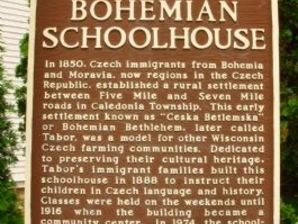
In 1850, Czech immigrants from Bohemia and Moravia, now regions in the Czech Republic, established a rural settlement between Five Mile and Seven Mile Roads in Caledonia Township. This early settlement known as “Ceska Betlemska” or Bohemian Bethlehem, later called Tabor, was a model for other Wisconsin Czech farming communities. Dedicated to preserving their cultural heritage, Tabor’s immigrant families built this schoolhouse in 1888 to instruct their children in Czech language and history.... Read More
